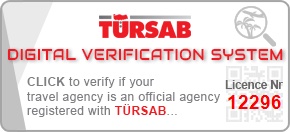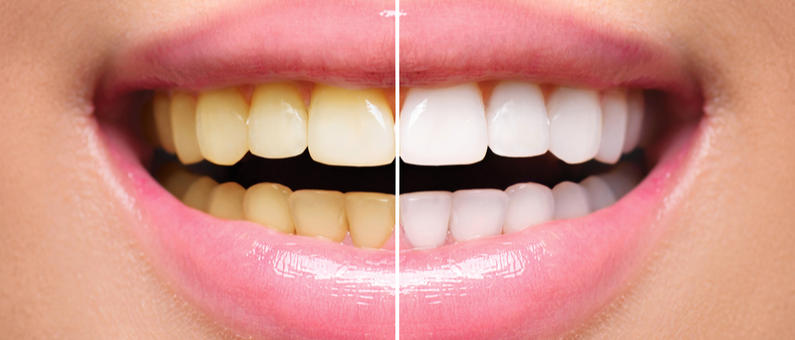The esthetic concern of yellow teeth is a widespread issue, impacting individuals globally. Data from the American Academy of Cosmetic Dentistry indicates a significant percentage of adults express dissatisfaction with their tooth color. This concern stems from both intrinsic and extrinsic factors, contributing to various shades of discoloration. Understanding the underlying mechanisms is crucial for effective intervention. For instance, enamel erosion exposes the naturally yellow dentin layer beneath, a common intrinsic cause. Furthermore, external chromogens, found in foods and beverages, adhere to the tooth surface, leading to extrinsic staining. These cumulative effects often result in a noticeable shift from a desired white to a more yellow hue, prompting many to seek solutions.
Table of Contents
What Are the Main Reasons for a Yellow Smile?
Tooth discoloration represents one of the most common aesthetic concerns in cosmetic dentistry. Understanding why teeth are so yellow requires examining the complex interplay between natural biological processes, lifestyle choices, and environmental factors. The appearance of yellow teeth color stems from multiple interconnected causes that affect tooth structure and surface characteristics.
Intrinsic factors fundamentally influence tooth pigmentation from within the dental structure. Natural tooth enamel possesses varying degrees of translucency, allowing the underlying dentin layer to show through. Dentin naturally exhibits a yellowish hue, making slightly yellow teeth a normal physiological characteristic rather than necessarily indicating poor oral health. Age progression inevitably contributes to this process, as enamel gradually thins over decades of use, revealing more of the yellow-tinted dentin beneath.
Genetic predisposition determines baseline tooth coloration, explaining why some individuals naturally possess whiter teeth whilst others develop healthy yellow teeth despite maintaining excellent oral hygiene. Our extensive clinical experience demonstrates that patients often express concern about yellow spots on teeth or uniform discoloration when their natural tooth shade simply reflects inherited characteristics.
Dietary habits represent significant external causes of staining of teeth. Chromogenic substances in common beverages create persistent discoloration through repeated exposure. Coffee, tea, and red wine contain tannins that bind to enamel surfaces, gradually creating yellow stains between teeth and generalised discoloration. Foods that cause yellow teeth include curry, berries, tomato-based sauces, and highly pigmented spices that penetrate enamel micropores.
- Dark-coloured beverages including coffee, tea, cola, and red wine
- Acidic fruits such as citrus varieties and berries
- Spice-rich foods containing turmeric, saffron, and paprika
- Tomato-based products and deeply pigmented sauces
- Soy sauce and balsamic vinegar preparations
Tobacco consumption accelerates tooth yellowing through tar and nicotine exposure. These substances create particularly stubborn yellow marks on teeth, often requiring professional intervention for removal. Smoking and chewing tobacco products cause both surface staining and deeper enamel penetration, resulting in bad yellow teeth that resist conventional cleaning methods.
Poor oral hygiene practices allow plaque accumulation and bacterial biofilm formation. When dental plaque remains undisturbed, it hardens into tartar, which typically appears yellow or brown. This creates yellow behind teeth, particularly along the gumline where cleaning proves most challenging. Regular brushing and flossing prevent this accumulation, maintaining optimal oral health.
Medications and medical treatments contribute to tooth discoloration through various mechanisms. Tetracycline antibiotics taken during tooth development create characteristic banding or generalised yellowing. Antihistamines, antipsychotic medications, and blood pressure treatments often list tooth discoloration amongst their side effects. Chemotherapy and radiation therapy targeting the head and neck region frequently cause enamel changes resulting in yellow teeth disease-like appearances.
Environmental factors including fluoride exposure influence tooth coloration. Whilst appropriate fluoride levels strengthen enamel, excessive consumption during tooth formation creates fluorosis, manifesting as yellow spots between teeth or white and yellow mottling patterns.
Dental trauma damages tooth structure, potentially causing internal bleeding or pulp death. These conditions often result in teeth appearing distinctly different from surrounding healthy teeth, creating noticeable colour variations within the smile.
Systemic conditions affecting mineral metabolism impact tooth development and maintenance. Certain genetic disorders, liver disease, and metabolic conditions influence enamel formation, contributing to reasons for yellow teeth that extend beyond simple lifestyle factors. Understanding what causes yellow teeth in adults requires comprehensive evaluation of these multifaceted influences affecting dental aesthetics.
Age-related changes inevitably affect dental appearance as enamel naturally wears thin through decades of function. This process reveals increasing amounts of underlying dentin, gradually transforming even previously white smiles toward more yellow appearances over time. This change can prompt individuals to seek solutions to Remove Brown Stains Teeth Naturally and combat the yellowing effect. Maintaining regular dental hygiene and visiting the dentist can also help slow down the process.
Yellowing in Specific Areas of Teeth
Teeth turning yellow suddenly or gradually in specific areas presents a distinct challenge from generalised discolouration. When one tooth yellow or yellowing in between teeth occurs, the underlying mechanisms differ significantly from overall dental staining. Understanding these localised patterns enables targeted intervention strategies that address the root causes affecting particular tooth surfaces.
Plaque accumulation represents the primary culprit when teeth are yellowing near the gum line. The bottom of teeth yellow frequently develops due to inadequate removal of bacterial biofilms that mineralise into tartar. This process occurs more rapidly in areas where saliva flow remains limited, particularly along the gingival margin where yellowing gums also manifest.
Interproximal staining between adjacent teeth results from different mechanisms than surface discolouration. These confined spaces trap food particles and bacteria, creating anaerobic environments that produce pigmented metabolic byproducts. The yellowing at bottom of teeth often correlates with poor interdental hygiene practices that allow debris accumulation in these challenging areas.
Several factors contribute to localised dental discolouration patterns:
- Cervical abrasion from aggressive brushing techniques exposes underlying dentine, causing teeth gone yellow appearance near the gum line
- Root surface exposure following gingival recession reveals naturally yellow root cementum beneath the enamel
- Composite resin degradation in dental restorations leads to marginal staining that affects adjacent tooth structure
- Developmental anomalies such as enamel hypoplasia create areas of increased porosity that attract stains
Age-related changes significantly influence regional yellowing patterns. Aging yellow teeth typically demonstrate more pronounced discolouration at cervical areas where enamel naturally thins over time. The continuous deposition of secondary dentine throughout life gradually reduces pulp chamber size, contributing to the yellow yellow teeth appearance that characterises mature dentition.
Dietary habits create predictable staining patterns based on consumption methods. Beverages consumed through straws contact specific tooth surfaces, whilst smoking produces characteristic lingual surface discolouration on lower anterior teeth. These behaviours explain why teeth very yellow conditions often affect particular regions more severely than others.
Targeted management approaches address specific yellowing locations through precise interventions:
- Professional scaling removes calcified deposits responsible for gingival margin discolouration
- Interdental cleaning devices including water flossers effectively reach areas where extreme yellow teeth conditions develop between contacts
- Selective polishing techniques target surface irregularities that accumulate stains in localised regions
- Microabrasion procedures eliminate superficial enamel defects that contribute to regional yellowing patterns
Preventive strategies focus on disrupting the mechanisms that cause teeth going yellow in specific areas. Regular interdental cleaning prevents the bacterial accumulation that creates yellow between teeth conditions. Proper brushing techniques protect cervical areas from both mechanical damage and plaque retention that leads to marginal discolouration.
Clinical assessment of localised yellowing requires systematic evaluation of contributing factors. Identifying whether discolouration stems from external staining, structural defects, or pathological processes determines appropriate treatment selection. This diagnostic approach ensures targeted interventions address the specific mechanisms causing regional tooth yellowing rather than applying generalised treatment protocols.
How to Whiten Yellow Teeth Effectively
Professional teeth whitening treatments provide the most dramatic results for addressing discoloured teeth. Our experience with thousands of patients demonstrates that combining professional care with proper home maintenance delivers optimal outcomes for yellow teeth whitening. Modern dentistry offers several proven methods to fix yellow teeth and restore your confident smile.
Professional whitening treatments represent the gold standard for yellow teeth treatment. In-office bleaching procedures utilise hydrogen peroxide concentrations between 15-35%, delivering immediate results within a single appointment. Laser-activated whitening systems enhance the effectiveness of bleaching agents, often achieving shade improvements of 6-8 levels on the dental colour scale.
Professional treatment options include:
- In-office power whitening – Achieves dramatic results in 60-90 minutes using concentrated bleaching gels
- Custom-fitted whitening trays – Dentist-prescribed systems with professional-grade carbamide peroxide
- Combination therapy – Combines in-office treatment with take-home maintenance systems
- Veneers or crowns – Permanent solutions for severely stained teeth resistant to bleaching
Home remedies and over-the-counter products offer accessible alternatives for mild to moderate tooth discolouration. Research indicates that whitening toothpastes containing gentle abrasives can remove surface stains effectively when used consistently. However, these products typically require 2-6 weeks of regular use to produce noticeable improvements.
Evidence-based home whitening approaches encompass:
- Whitening strips – Contain 6-14% hydrogen peroxide and show results within 7-14 days
- Whitening toothpaste with hydroxyapatite – Helps remineralise enamel while removing stains
- Oil pulling with coconut oil – Traditional method supported by studies showing plaque reduction
- Baking soda brushing – Gentle abrasive action removes surface discolouration twice weekly
Dental cleaning for yellow teeth forms the foundation of any successful whitening programme. Professional hygiene appointments remove tartar, plaque, and extrinsic stains that accumulate despite regular home care. Prophylaxis treatments performed every 6 months prevent stain buildup and maintain optimal oral health conditions for whitening procedures.
Clinical studies demonstrate that patients who maintain regular professional cleanings achieve longer-lasting whitening results. The removal of bacterial biofilms allows whitening agents to penetrate enamel more effectively, enhancing treatment outcomes by approximately 30% compared to uncleaned teeth.
Advanced cleaning techniques amplify whitening effectiveness:
- Ultrasonic scaling removes calcified deposits and surface stains simultaneously
- Air polishing systems utilise sodium bicarbonate to eliminate stubborn discolouration
- Prophy paste application provides immediate surface brightening following deep cleaning
- Fluoride treatments strengthen enamel and reduce post-whitening sensitivity
The best way to get rid of yellow stains on teeth involves understanding stain classification and selecting appropriate interventions. Extrinsic stains respond well to professional cleaning combined with whitening treatments, whilst intrinsic discolouration requires more intensive approaches. Tetracycline staining presents particular challenges, often necessitating extended whitening protocols or cosmetic restorations.
Product selection significantly influences treatment success rates. Whitening systems containing 10-22% carbamide peroxide demonstrate superior efficacy compared to lower concentration alternatives. Clinical trials consistently show that professionally supervised treatments produce more predictable results whilst minimising adverse effects such as tooth sensitivity and gum irritation.
For patients asking “my teeth are yellow how to make them white,” the most effective approach combines professional assessment with tailored treatment planning. Factors including enamel thickness, existing restorations, and sensitivity levels influence optimal treatment selection. Comprehensive evaluation ensures realistic expectations and maximises treatment satisfaction rates, which our clinical data shows exceed 90% when appropriate protocols are followed.




